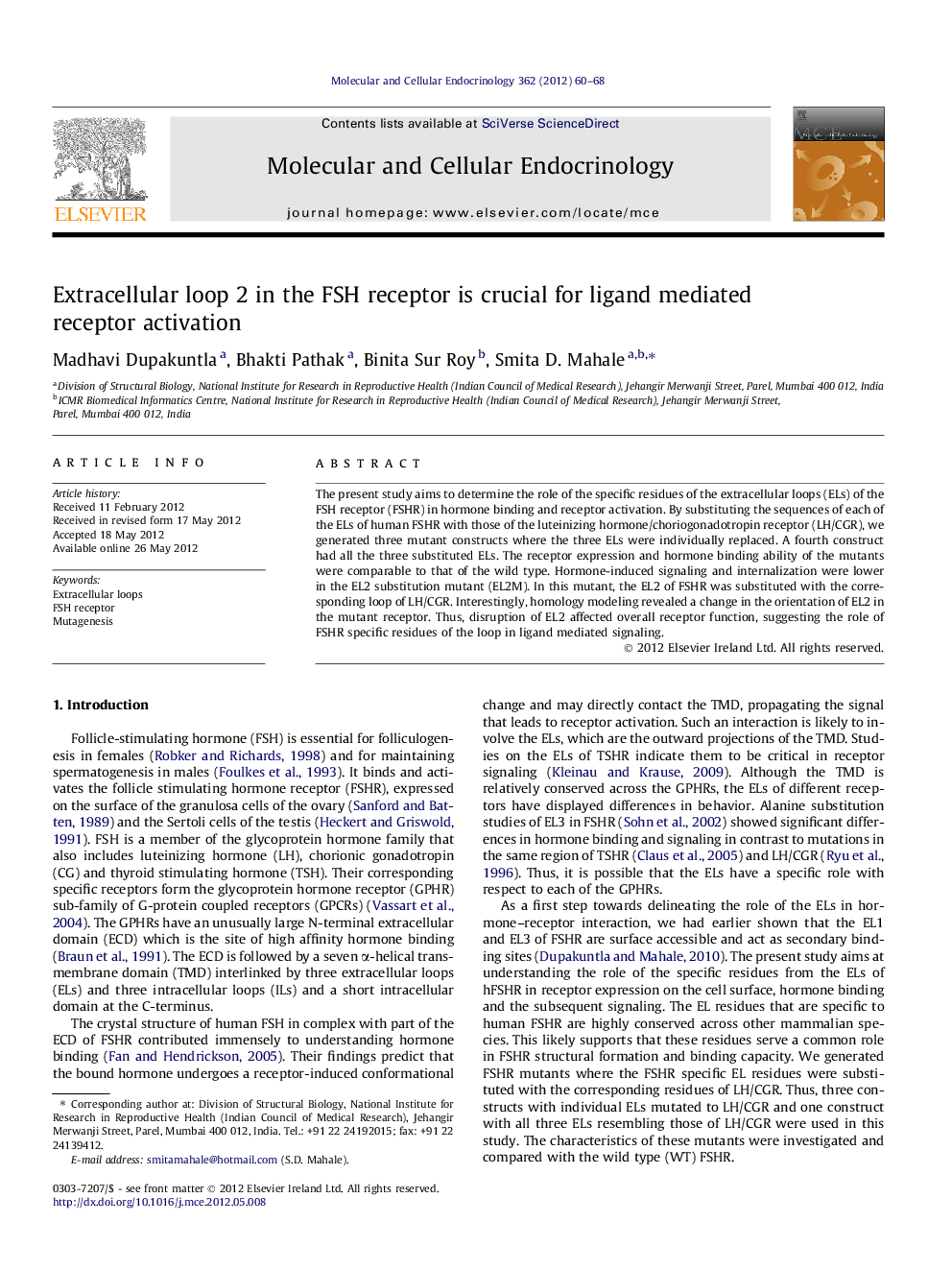| Article ID | Journal | Published Year | Pages | File Type |
|---|---|---|---|---|
| 2196276 | Molecular and Cellular Endocrinology | 2012 | 9 Pages |
The present study aims to determine the role of the specific residues of the extracellular loops (ELs) of the FSH receptor (FSHR) in hormone binding and receptor activation. By substituting the sequences of each of the ELs of human FSHR with those of the luteinizing hormone/choriogonadotropin receptor (LH/CGR), we generated three mutant constructs where the three ELs were individually replaced. A fourth construct had all the three substituted ELs. The receptor expression and hormone binding ability of the mutants were comparable to that of the wild type. Hormone-induced signaling and internalization were lower in the EL2 substitution mutant (EL2M). In this mutant, the EL2 of FSHR was substituted with the corresponding loop of LH/CGR. Interestingly, homology modeling revealed a change in the orientation of EL2 in the mutant receptor. Thus, disruption of EL2 affected overall receptor function, suggesting the role of FSHR specific residues of the loop in ligand mediated signaling.
► Role of receptor specific residues of FSHR extracellular loops was determined. ► Four FSHR mutants created by replacing EL residues with those of LH/CGR. ► Effect on hormone binding and subsequent receptor activation studied. ► EL2 substitution caused impaired signaling and internalization.
